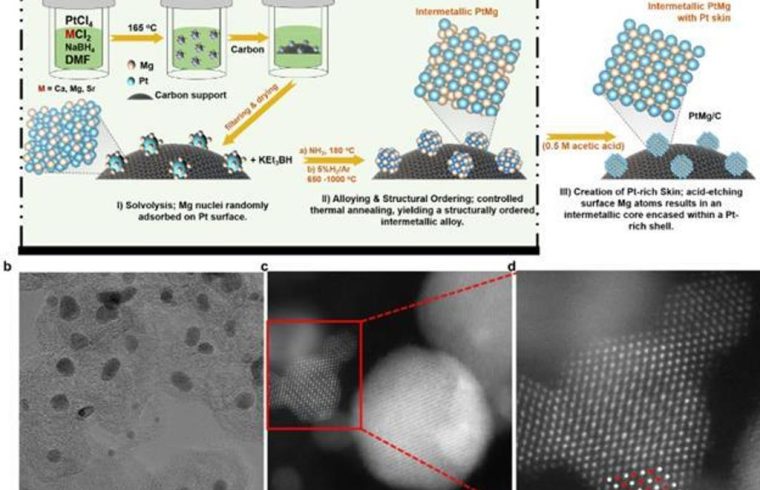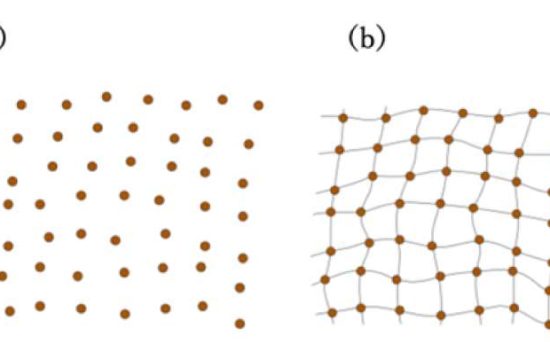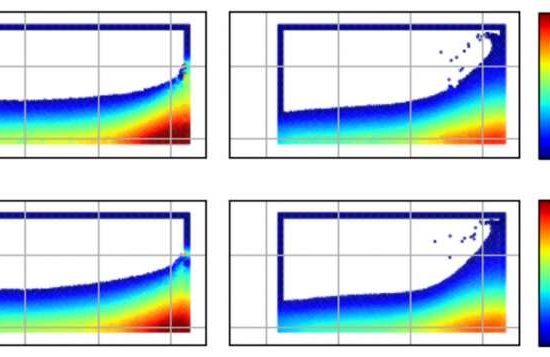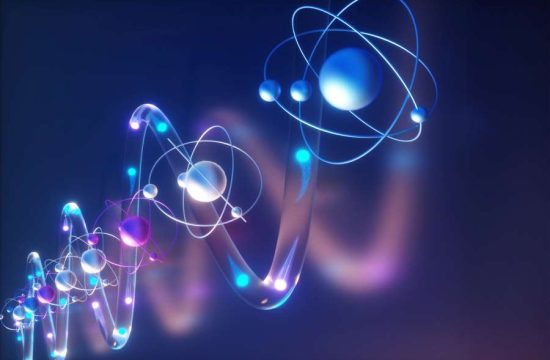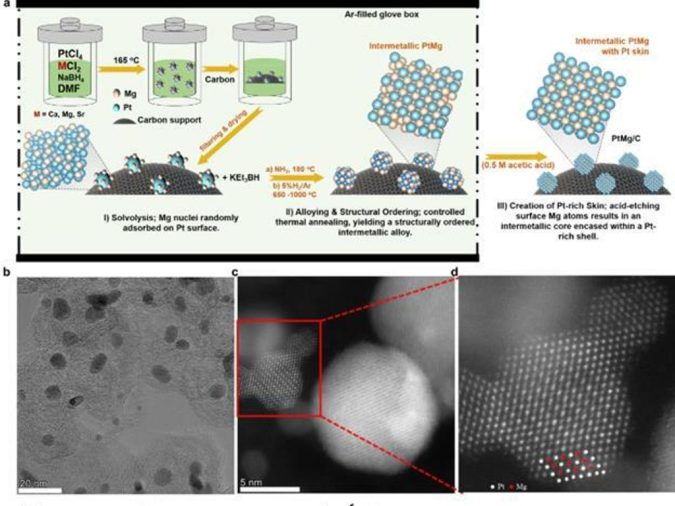
Scientists at the Daegu Gyeongbuk Institute of Science and Technology have created a fuel cell catalyst made from platinum and magnesium. The new catalyst, which uses the world’s first platinum-magnesium alloy nanoparticles, is expected to be both highly efficient and durable, potentially offering significant improvements in clean energy technology. The study was published in Nature Communications (2024).
Fuel cells combine hydrogen and oxygen to generate electricity. Platinum is used as a catalyst to speed up these reactions, but it’s also expensive. By integrating magnesium into the alloy used in the new catalyst, the design not only cuts costs but also enhances the fuel cell’s efficiency and longevity.
This is a significant achievement because, for years, researchers have known that alloys of platinum with alkaline earth metals hold immense potential for fuel cells due to their high catalytic activity and stability. However, the challenge of creating these alloys in nanoparticle form, given the extremely high negative reduction potentials of the alkaline earth metals, has remained a significant barrier until now.
In this research, through a systematic solution-phase approach, Professor Jong-Sung Yu and co-workers have overcome this challenge. What makes this new technology so special? Supporting theoretical studies conducted by the University of Texas at Austin explain that the synergy between the platinum and magnesium is very strong which prevents the alloy from degrading over time. The catalyst thus remains effective for longer periods, which is crucial for various applications.
Practical tests have shown that the new alloy surpasses the U.S. Department of Energy’s 2025 performance targets for fuel cells, demonstrating its high efficiency and long-term stability. “Most fuel cell catalysts struggle with durability and cost, but by overcoming the synthesis challenge, our platinum-magnesium nanoparticles solve these issues by combining platinum’s excellent reaction speed with magnesium’s durability and affordability,” explains Professor Jong-Sung Yu, who led the study. “This is a major step toward creating more efficient and sustainable fuel cells.”
“This new development doesn’t just make fuel cells work better; it also paves the way for using platinum-magnesium nanoparticles in other energy technologies, like hydrogen production and other electrochemical reactions,” said Caleb Gyan-Barimah, first author of the study.
As the world shifts towards sustainable energy, innovations like these are critical. In this respect, the researchers plan to focus on refining the alloy’s composition and scaling up production to make these advanced materials more widely available. Their next steps include improving the alloy, exploring manufacturing methods, and partnering with industry and government to bring these innovations to market.


